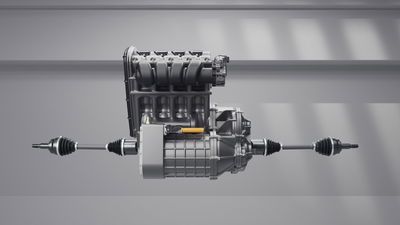A Not-Electric Version Of The Electric Fiat 500e Will Arrive In 2026

Okay, time for a very quick history lesson. The new Fiat 500 was launched back in 2007, a retro-styled city car designed to evoke the old Fiat 500 launched in 1957 (that old 500 wasn’t the first 500, but that’s a whole other thing). Then, in 2020, Fiat launched an even newer 500 - the 500e - but since it has an all-electric powertrain, it’s still sold alongside the old new 500. So far, so simple (not).
Recently, though, rumours have emerged that Fiat was considering fitting a hybrid powertrain to the (new) new 500, rumours that have now been confirmed by Fiat. It’s been announced as part of a move by Fiat’s parent company, Stellantis, to bolster its production in Italy.

While Stellantis owns literally every mass-market Italian car brand, it’s not been on the best of terms with the country lately. First, there was the spat around the name of the Alfa Romeo Milano, which led to it being renamed Junior barely a week after its debut, then there was Italy’s seizure of a shipment of tiny Moroccan-built Fiat Topolino EVs over a flag badge.
It seems Stellantis is trying to set things straight, though, as it’s announced two new models that it reckons will significantly increase production at two of its six Italian factories. A new hybrid variant of the Jeep Compass will be built at its plant in Melfi in the country’s south, but more significantly, production at its plant in Mirafiori, Turin will be upped by this new hybridised 500.

Expected to enter production in 2026, the new model is a response to unstable demand for fully-electric cars. Details are scarce at the moment, but Stellantis already has a widely-used powertrain for small hybrids, pairing a 1.2-litre turbocharged three-cylinder with an electric motor for various total outputs. Complicating things is that the 500 was introduced before Fiat became part of Stellantis, so sits on an entirely different platform to most cars using that powertrain.
It’s also not clear what this news means for the old new 500, which remains a strong seller across Europe despite being 17 years old at this point, and is itself exclusively now a mild hybrid. Will the introduction of a newer hybrid with similar cutesy looks finally kill it off, or will it still be in production into the next millennium? Only time will tell.















Comments
No comments found.